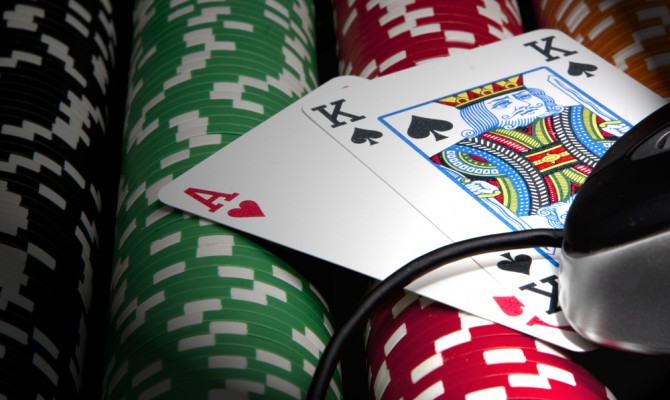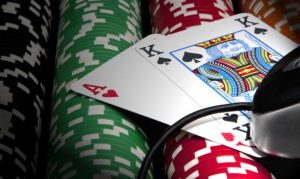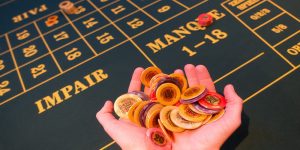Blackjack is one of the most popular casino games in the world. It combines luck with simple strategy, making it easy to learn but rewarding for players who understand the rules. The goal is straightforward: beat the dealer’s hand without going over 21. While the cards you receive depend on chance, smart decisions can tip the odds in your favor. This guide explains the core strategies, when to split, when to double down, how to handle tricky soft hands, and how to stay in control while playing.
What Is Blackjack?
Blackjack is played with one or more standard decks of 52 cards. Each card has a point value: numbers count as their face value, face cards (J, Q, K) are worth 10, and aces can count as 1 or 11. Each round begins with players placing a bet and receiving two cards. The dealer also receives two cards, one face-up (the upcard) and one face-down (the hole card). The objective is to form a hand total closer to 21 than the dealer’s hand without going over.
Basic Blackjack Rules to Remember
- Dealer must hit until reaching at least 17.
- A “blackjack” is an ace plus a 10-value card, totaling 21 on the first two cards.
- If both player and dealer tie with the same total, it’s a push (your bet is returned).
- If you go over 21, you bust and automatically lose.
Core Blackjack Strategy Tips
Blackjack strategy is about making the most informed decision based on your cards and the dealer’s upcard. These principles form the foundation of solid play:
- Check the dealer’s upcard: If the dealer shows a strong card (10, J, Q, K, or ace), play more aggressively to get close to 21. If the dealer shows a weak card (2–6), play conservatively and let the dealer risk busting.
- Never split 10s: A total of 20 is one of the strongest hands. Splitting reduces your win rate and increases risk.
- Always split aces and eights: Aces give you two chances at 21. Eights turn a weak 16 into two competitive hands.
- Use doubling down carefully: Double your bet when you have a strong starting total, such as 11 against a dealer’s weak upcard. Don’t overuse this move.
Splitting Pairs: The Do’s and Don’ts
Pair splitting is one of the most misunderstood parts of blackjack. Here are the key rules:
- Split: Aces, eights.
- Do not split: Tens, fives, or face cards.
- Consider carefully: Nines and sevens, depending on the dealer’s upcard.
When you split, you place an additional bet equal to your original wager. Each new hand receives another card, and play continues as usual.
When to Double Down
Doubling down allows you to increase your stake after receiving your first two cards. You draw only one more card. Common doubling opportunities include:
- 11 against any dealer card except an ace.
- 10 against a dealer’s 9 or lower.
- 9 against a dealer’s 3–6.
Be cautious: doubling down too often can drain your bankroll quickly if the cards do not land in your favor.
Playing Soft Hands
A “soft hand” contains an ace that can count as 1 or 11 without busting. For example, Ace + 6 is a soft 17. These hands give you flexibility but require strategy:
- Soft 17: Hit or double down if the dealer shows a weak card; stand against stronger dealer cards if hitting risks busting.
- Soft 18 (Ace + 7): Stand against dealer 2, 7, or 8; hit against 9, 10, or ace; double against 3–6.
Why 10s Matter
Remember that 16 of the 52 cards in a deck are worth 10 (10, J, Q, K). This high concentration influences strategy. When you need a strong card to reach 20 or 21, a 10 is likely. When you are already close to 21, hitting risks busting because a 10 may land.
Managing Bankroll and Mindset
Even the best blackjack players lose hands. The key is to manage your money and emotions:
- Stick to a consistent stake size you can afford.
- Avoid chasing losses by betting bigger after losing hands.
- Don’t get carried away by short winning streaks.
- Take breaks to stay sharp and avoid fatigue-based mistakes.
Common Mistakes to Avoid
- Splitting tens and fives.
- Standing on soft hands too early.
- Ignoring the dealer’s upcard when making decisions.
- Doubling down recklessly.
- Failing to walk away when you’ve reached your budget limit.
Quick Blackjack FAQ
What is the best hand in blackjack?
The best hand is a “blackjack,” which is an ace plus a 10-value card on your first two cards. It usually pays 3:2 unless otherwise stated.
Is blackjack mostly luck or skill?
Blackjack combines both. The cards you are dealt are luck, but how you play them is skill. Using strategy reduces the house edge significantly.
Should you always split aces and eights?
Yes. Splitting aces gives two chances at 21, and splitting eights avoids a weak 16, turning it into two stronger starting hands.
What does soft 17 mean?
Soft 17 is a hand of ace + 6. Casinos vary on whether dealers hit or stand on soft 17. Players should usually hit or double on this hand.
Can you count cards online?
In live dealer blackjack, card counting is difficult because decks are reshuffled often. In RNG blackjack, the shuffle is random each hand, so counting is not practical.
Wrap-Up
Blackjack’s appeal lies in its mix of chance and decision-making. By following key strategies—like checking the dealer’s upcard, splitting wisely, using doubling down at the right time, and managing your bankroll—you can improve your odds and enjoy the game more. While no system guarantees wins, learning strategy makes blackjack one of the most rewarding casino games to play in 2025.






